
Paper delivered by Steve Luecking, Professor of Art, Depaul University, Chicago, Illinois
for a panel titled Leonardo's Legacy at the 2013 FATE Conference in Savannah, Georgia

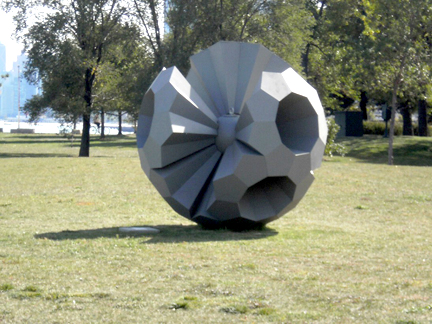
Near the end of his life the Nuremberg artist and publisher Albrecht Durer printed two books compiling his applications of geometry and analytical thought to drawing. A number of these anticipate applications in today’s computing. Among these are the invention of the morphing or transformation grid used in image processing, the devising of a method for generating facial features used in facial recognition software and the creation of a perspective drawing machine that is the analog of ray tracing. Durer also invented specialized drawing instruments, one of which is a primitive analog computer.
Introduction
In 1525 Albrecht Durer published his famous text on applied geometry "The Four Books on Measurement: Instructions for Measuring with Compass and Ruler". A few years later, just after he died in 1528 at the age of 56, his widow released "The Four Books on Human Proportion". Both books assemble cutting edge knowledge at the time, but also hold numerous innovations in applied mathematics. As it turns out, a number of these innovations remain essential to modern day applications of computing
“On Measurement” was written as a text for young artists laying out the geometric knowledge that Durer believed necessary for professional art making. Largely devoted to geometric construction of polygons and numerous curves, it also boasts sections on perspective. Especially intriguing in their presaging of current computing applications are Durer’s illustrations of devices he created for perspective drawing and the drawing of curves.
“On Human Proportion” largely treats human physiognomy, ostensibly the study of human character as reflected in bodily and facial features. Physiognomy’s spurious assumption of causality between physical features and character did not concern Durer. Rather his book was an early treatise on anthropometrics, a
set of human measurements standardized from a study of a number of representatives from four different age groups of both sexes. Unique in this book was Durer’s adaptation of the methods of physiognomy into mathematical methods for the artist to generate new faces from a single type. These methods remain today in facial recognition programs and in image processing programs.
Scientific Background
Throughout his life Albrecht Durer investigated the role of descriptive geometry in accurately depicting visible reality in drawing and painting. He wrote: “Sane judgment abhors nothing so much as a picture perpetrated with no technical knowledge, although with plenty of care and diligence.”
His investigations included two extended trips to Italy, where his exposure to the Venetian art world of 1494-95 propelled his interest in mathematics. Acquaintance with Giovanni Bellini, for example, brought him up to date with advances in perspective. Also, during his stay there the first printed book on
mathematics, “Summa De Arithmetica, Geometria, Proportioni Et Proportionalita” was published by Luca Pacioli. Pacioli, a Franciscan friar and a student of Della Francesca, wrote “Summa” as an extensive compendium of mathematics as known in the late 15th century. Though he did not then meet Pacioli,Durer consequently updated his knowledge of mathematics and learned of Leonardo Da Vinci, Pacioli’s housemate, and his application of mathematics to art.
Ten years later Durer returned to Italy and on this trip did meet with Pacioli. The most important outcome of this and his earlier Italian sojourn was to introduce Durer to scientific methods. His embrace of science went on to condition his thinking for the rest of his life.
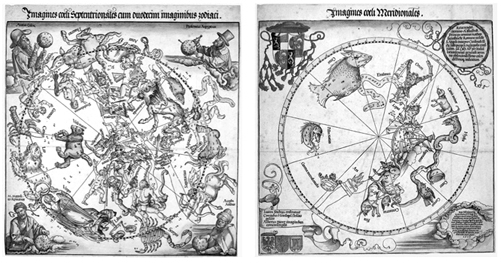
Figure 1. Albrecht Durer and Johannes Stabius, Star Map: _orthern and Southern Hemispheres, 1515
One example of this was Durer’s abandonment of astrological subject matter, a big seller for a printer of the time, in favor of astronomy. This was not to be a casual interest. In 1509 he purchased the entire library of astronomer Regiomontanus from the estate of Nuremberg businessman Bernhard Walther.
Walther had sponsored the residency of Regiomontanus in Nuremberg between 1471 and 1475. Regiomontanus was then the leading scholar of Ptolemaic astronomy, a noted mathematician and a designer of sophisticated new instruments for improved astronomical measurements.
In 1515 Durer became the designer and publisher of the first printed star map in Europe (Figure 1). Produced in collaboration with the Austrian cartographer and mathematician Johannes Stabius, the map relied heavily on data assembled by Regiomontanus, plus refinements developed by Walther.
Along with Durer’s knowledge of the Ptolemaic system came an understanding of a family of curves known as epicycloids. A fixed point on a circle will trace an epicycloid as that circle rolls around the perimeter of yet another circle. By varying the relative size of the two circles and the position of the fixed
point relative to the rolling circle a host of unique curves are possible (Figure 2). These curves will often loop backward, as they seem to coil around a circle.
The fact that epicycloids generate from two circles was key to the Ptolemaic description of planetary motion. To the ancient mind it was a given that all celestial motion must be perfectly circular. Nevertheless the observed paths of the planets, as seen from earth, were anything but circular. To the
contrary, planets would appear to stop and then loop backwards before proceeding forward. Claudius Ptolemy, a Greco-Roman astronomer and geographer, explained this retrograde movement by describing the path of the planets as epicycles, i.e., circles moving upon circles (Figure 3). Thus the perfect motion of the circle could be retained to explain the motion of the planets in a geocentric orbit
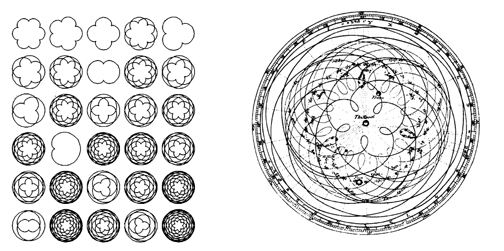
Figure 2. Sample epicycloids. Figure 3. Planetary system of Claudius Ptolemy.
Curves and Analog Computing
In the first book of “On Measurement” Durer illustrates an instrument of his own design used to draw epicycloids. This instrument – a compass of sorts for drawing circles upon circles – consisted of a sequence of four telescoping arms and calibrated dials (Figure 4). An arm attached to the first dial could rotate in a full circle, while a second arm fixed to another dial mounted the end of this first arm could rotate around the end of the first arm. This rotation around a rotating point described an epicycloid.
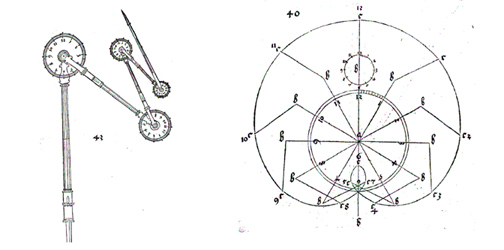
Figure 4. Durer’s epicyclic compass. Figure 5. The limaçon of Pascal as drawn by Durer.
As the son of a goldsmith Durer possessed the knowledge of metalworking to shepherd his design through the shops of the world-class instrument makers of Nuremberg. Precision calibration and adjustable arms allowed its user to plot an endless number of curves by setting the length of each arm and determining the rate at which the arms turned. This, in effect, constituted a manual programming by setting the parameters of each curve plotted.
The example given in “On Measurement” is a curve known to mathematicians as the limaçon (snail) of Pascal (Figure 5), although Durer published the curve some 100 years before Étienne Pascal. To draw this curve Durer used two arms of his epicyclic compass. Each time he rotated the central arm ab in 30° increments, he simultaneously rotated the second arm bc in 30° increments in the same direction. Interpolating the plotted points into a smooth curve completed the construction. The curve approximates one rotation of the planets Mars and Venus, and may have been the artist’s rationale for constructing it.
Durer’s instrument could also draft a family of closely related curves known as the hypocycloids. These curves generate from a point on a circle rolled inside of a stationary circle. These are the curves created with the classic drawing toy, the Spirograph®.
Durer’s Door and Raytracing
Among Durer’s mathematical capabilities was an understanding of projective geometry unparalleled by any artist of his time. His involvement in the star map of 1515 and an earlier publication of treatise on the astrolabe introduced him to stereographic projection. His second trip to Italy included meetings with Pacioli familiarizing him with Piero Della Francesca’s unpublished work on perspective. At the time of his death he was working on a book dedicated to this geometry.
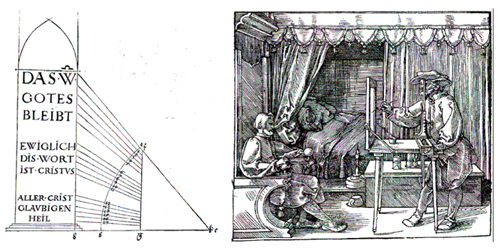
Figure 6. Proportioning text for perspective correction. Figure 7. Durer’s portable scanner.
Some of this knowledge appears in books three and four of “On Measurement”. Book three focuses on monument design and contains sections on the anamorphic correction of proportions in columns and lettering (Figure 6) as well as on solar projection in sundials. Book four features some of the most widely
reproduced illustrations from “On Measurement”. These depict a number of apparatuses devised and sold by Durer as aids for perspective drawing. One, depicted in Figure 7, he referred to as a scanner. This was a portable apparatus meant for use in the field or in a portrait subject’s home. Variations on this device were available commercially until the 1930’s.
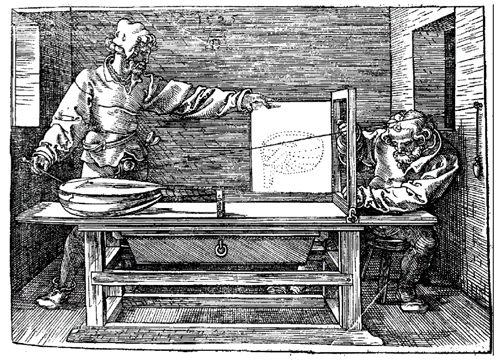
Figure 8. Durer’s door.
Arguably the most intriguing of Durer’s apparatuses was a device employing the same principles as raytracing, the most common method of rendering 3D images in a computer. Raytracing measures the raster position of a ray emanating from a point on a virtual object to the position of a virtual camera as
that ray passes through a virtual screen. The sum total of these raster points, i.e., pixels, creates a twodimensional perspective image of the object.
Durer’s door, as the device came to be named, constitutes an ideal physical analog of raytracing. Figure 8 demonstrates how the device works. A thread attaches to the end of a stylus that an assistant moves from point to point along the contours of the object, in this case a lute. The thread passes through the door’s frame and then through a hook on the wall. A weight at the end of the thread ensures that it remains taut as the stylus changes position. The thread forms a ray and the hook acts as the center of projection and corresponds to the camera position in raytracing.
Figure 8 has Durer using a square to measure the horizontal and vertical position at which the thread passes through the door. He then would transfer this measure to a paper sheet affixed to the door. The image that emerged as dotted lines displays near perfect perspective.
Physiognomy and Facial Recognition
Physiognomy was a now debunked science, which purported to reveal connections between one’s facial characteristics and one’s character. Its reach dated back to a treatise by Aristotle and continued until fizzling out in the 19th century. Its methods aped science in that practitioners carefully measured human faces and categorized these according to the proportions relating the measures.
Artists were expected to know something of physiognomy. Its use in late Medieval and early Renaissance art was cautionary: used in illustrating religious broadsides to represent all manner of sinners and their evils, which the faithful were to avoid. It was also precautionary: artists must be aware of physiognomy in order to avoid potentially negative depictions of saints and one’s patrons.
In “On Human Proportion” Durer borrowed from the methods of physiognomic measure as developed by Leon Battista Alberti and published in Francesco di Giorgio's “De Harmonica Mundi Totius” of 1525. He determined “average” faces by measuring a sampling of over 200 people from five groups as determined by age and gender. These included old and young men and women and infants. He then justified his anthropometric findings with Vitruvius’ canon of proportions to create an ideal standard for each group. In this regard Durer wrote: “I hold that the perfection of form and beauty is contained in
the sum of all men.”
Durer then drew grid lines over orthographic views of the head such that intersections denoted over twenty significant features of the face. By moving the grid points and thus the position and proportions of the original artist could generate a new version of the face (Figures 9 and 10).

Figure 9. Durer’s “ideal” male head. Figure 10. Re-proportioned version of the male head.
The number of possible versions makes for some interesting numbers, which become astonishingly large. If each of twenty points were to move only a single unit in horizontal, vertical and diagonal directions, then the possibilities are 920 or 12,157,665,459,056,928,801. If the changes in position increase to two units in each direction, then the variations increase to 2520 – a number too tedious to type. It becomes clear why today’s facial recognition programs use Durer’s method. A typical facial recognition program processes data from 25 points on the face (Figures 11, 13 and 13).
Morphing Grids
In 1524, prior to the publication of di Giorgio’s “De Harmonica”, Durer invented another method for transforming faces. (The evidence for this is found not found in “On Human Proportion”, but in Durer’s sketchbooks.) Known today as a transformation grid or morphing grid, this method appears as a common
tool in image processing programs.

Figures 11-13. Contemporary pointing systems for facial recognition data gathering.
Durer drew a head overlaid by a standard raster grid. Rather than shifting the position of key grid lines, he subsequently distorted the grid by elongating and flattening it as well as skewing and tapering the grid in four directions. Figure 14 reconstructs Durer’s transformation grids by using the Envelope tool in the
draw program Inkscape. Figure 15 illustrates a distortion of Durer’s self-portrait using a mesh – a grid with freely moving points – from Corel’s Photo-Paint program.
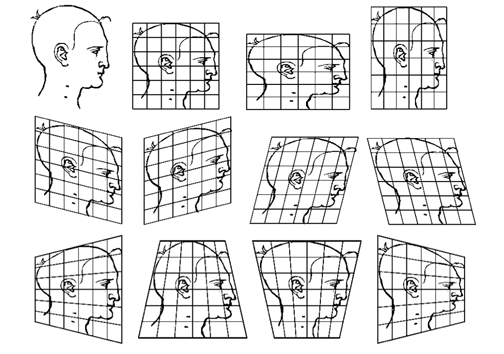
Figure 14. Mappings of Durer’s standardized male head onto stretched, skewed and tapered transformation grids.
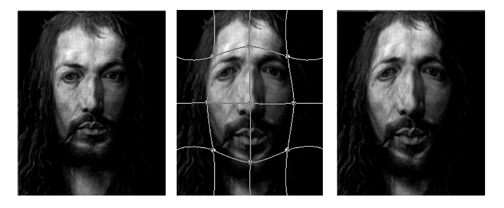
Figure 15. Mesh transformation of Durer’s face from his self-portrait at 28 years of age.
Conclusion
In the very last years of his life Durer wrote on his ideas of aesthetics. Most notably he believed that any notion of beauty was at best elusive, in large part due to the complexity of any artistic endeavor. He decreed, however, that the artist should “insist on the genuine forms of nature”. Key among those forms
was geometric order, which Durer, like the Italians Pacioli, DaVinci and Della Francesca, believed to be the reflection of the mind of God in nature. Part and parcel of nature was the ordering of human vision, where geometry also governed.
To Renaissance mind the act of drawing, or disegno, was the primary artistic and conceptual means by which nature’s embedded geometry was initially revealed and recorded. Durer sought to expand the ideas of descriptive geometry and its application in descriptive drawing by adding to the conceptual tools these
required. Any art that had not such tools, those that elicit genuine forms, he found abhorrent. In his search for these newer and better tools Durer devised methods that continue today in visual computing. The ability to produce imagery by application of descriptive tools, tools of hand and mind, to drawing remains invaluable to the production of digital art.